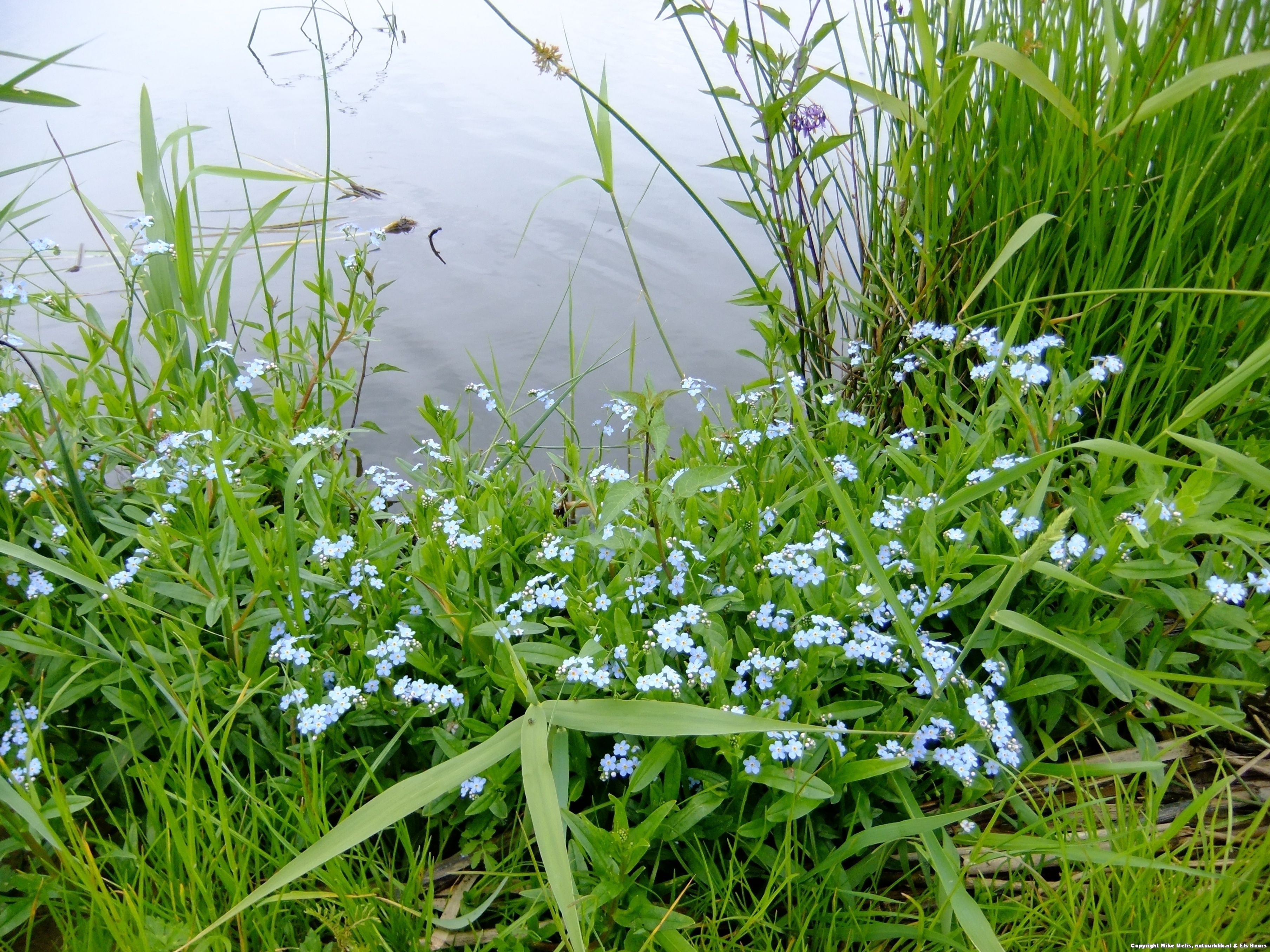When I’m out rowing on a summer’s day I enjoy looking at the wild flowers growing in the banks. The clear blue fragile little flowers of the Water Forget-Me-Not move me in particular, because they remind me of a romantic and tragic story of a lovestruck knight:
In the year 1248 an English knight by the name of Myosótis dreamed about the young Lady Palústris. She was the beautiful daughter of his Castellan and the most desirable lady of the land. Myosótis was an intelligent knight who had advised his master on political issues. He was short with a round face and lacked both broad shoulders and a strong body. He did have a kind personality, however, but this was not a highly valued characteristic at that time. How could he possibly attract the attentions of the woman of his dreams when she was surrounded by all those tough knights vying for her hand? Knights who had also beaten him during tournaments. During one of those endless feasts with polite conversations at the castle he had mustered every ounce of courage in him and thought up a plan to conquer the heart of his loved one. First he would have a master smith make him a new coat of mail to measure. This, he hoped, would make an impression. Then he ordered his page to deliver an invitation to the Lady to accompany him for a stroll through a garden of healing herbs. To his not inconsiderable surprise she accepted his request. She informed him she was pleasantly surprised by his invitation: a stroll through a garden was an agreeable change from all the visits to tournaments and fights between tough knights.
And so one summer’s day his squire helped him into his heavy shiny coat of armour and he set off on his horse to meet his Lady.
Walking with Palústris at his side, the knight walked along the River Thames and talked to her about all the amazing and healing characteristics of the plants growing along the riverside. The pretty young Lady was not enchanted by his new coat of arms, but by the endearing character of this knight who was so very different to all the other knights who had been wooing her. He surprised her by his extensive knowledge of the flowers and plants, an interest she shared.
When she spotted the small clear blue flowers with a tiny yellow heart, she called out in delight, “Knight Myosótis, you see those sweet little blue flowers on the riverbank. I would deeply appreciate receiving a small bouquet of those blue treasures picked by yourself.”
The knight felt flattered and honoured by her request and stretched out to pick the tiny flowers. And then a bit further to get the very last of the flowers. But he stretched too far. His heavy coat of arms caused him to lose his balance and he fell into the deep water. With a final burst of energy he rose once more to the surface with the small blue bouquet in his hands which he held out to his Beloved. He then spoke his final words: “Forget-Me-Not!” and the poor knight disappeared into the depths of the Thames.
From then on Lady Palústris called these small plants “Forget-Me-Nots” in memory of her lovestruck knight who came to such a sad end. Within no time this modest flower became known as a symbol of fidelity and never-ending love.
The Water Forget-Me-Not (Myosótis palústris) flowers from May to August, a heavenly light blue. It grows in damp rich earth, preferably on the banks of waterways. From here it can form floating flowering plaques which also keep their leaves in the winter. Floating Water Forget-Me-Nots mostly remain short, about 15 cm; growing among reeds they get taller; on riverbanks they can even get to be a metre high as a result of the changing water levels. The flowers are small but striking because of their clear blue colour. The plants multiply via rhizomes, but can easily self seed too.
In The Netherlands there are seven different varieties of Forget-Me-Nots. The tufted Forget-Me-Not, a summer flowerer with small pale green to slightly yellowish coloured petals which also enjoys a damp habitat. The other varieties have far smaller flowers: the Field Forget-Me-Not; the Wood Forget-Me-Not; the low-growing Early Forget-Me-Not; the tiny Strict Forget-Me-Not; and, the Changing Forget-Me-Not with its small petals which are first yellow with some turning pink before eventually becoming light blue.

